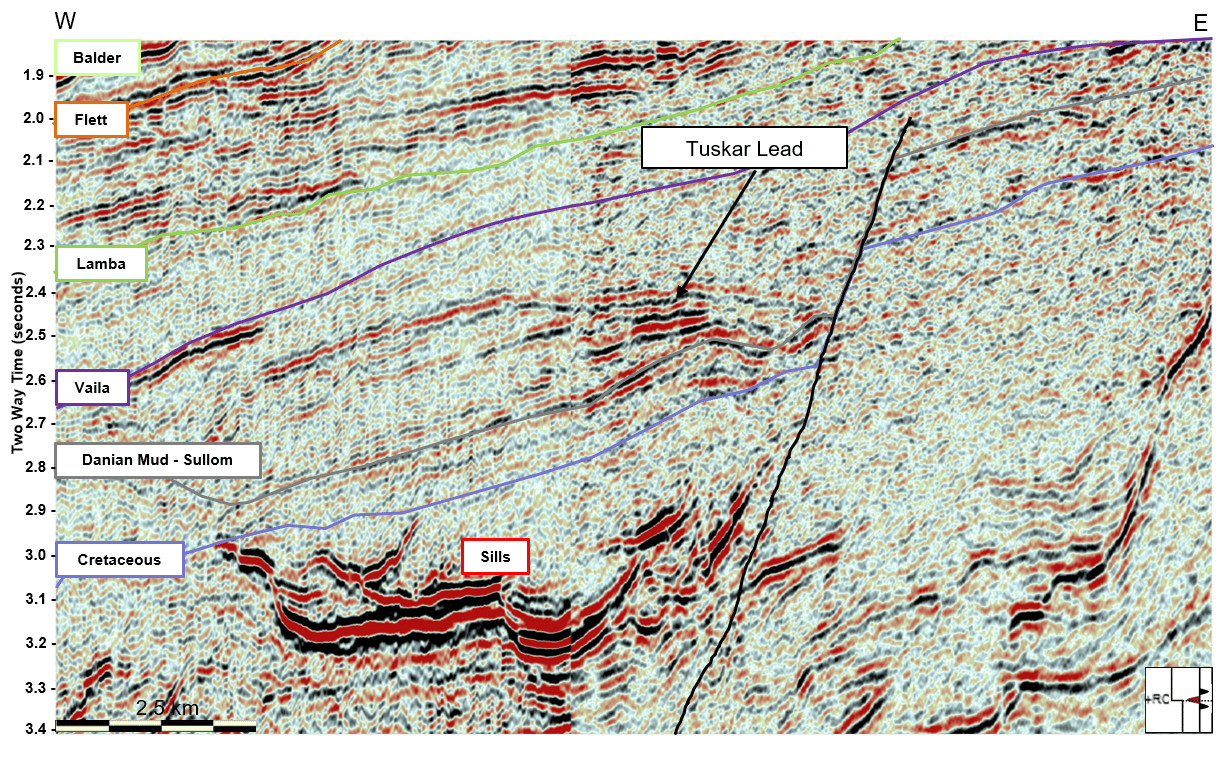Following the award of 3 new licences covering 14 blocks in the UKCS 32nd Licensing Round, Athena’s initial focus is on the Paleocene in Quad 208 where it has recognised a large stratigraphic trap (Tuskar lead) at Vaila level. The company plans to de-risk Tuskar with a new high quality 3D seismic dataset using the latest advances in seismic processing technology.
The Tuskar lead has P50 prospective resources of around 1 TCF, which would be sufficient to allow a gas hub to be developed in the region together with the neighbouring undeveloped gas discoveries at Bunnehaven and Tobermory.

All the significant Paleocene discoveries West of Shetland are primarily stratigraphic traps and Tuskar exhibits many similarities with these in terms of amplitude and AVO response. The Vaila target interval is at shallow depth, there are no basalt imaging problems and water depth is modest. Detailed work on the seismic attributes should enable Tuskar to be matured to drillable status, and drilling can be undertaken at moderate cost.
Building up a portfolio of prospects along Atlantic Margin
The West of Shetland contains the largest Yet to Find of the proven UKCS basins (P50 5.9 billion boe). The new licence awards complement Athena’s existing 2 licences in the West of Shetland Region. This large acreage spread covering ca. 1500 sq km forms the first step in Athena’s strategy to build an exploration portfolio along the eastern Atlantic Margin focused on the Tertiary and Cretaceous potential. The team has a wealth of experience in the region having worked the area for the last 30 years including many of the most significant fields such as Clair, Foinaven and Laggan.

Cretaceous potential
The majority of the new hydrocarbon provinces discovered this century have been in the Cretaceous of the Atlantic margin (Ghana, Mauritania-Senegal, Guyana, and Equatorial Guinea). This was due to previous lack of exploration of the Cretaceous as it was perceived to be relatively risky, more subtle & more expensive to explore than shallow structural or Tertiary AVO plays. Advances in seismic & drilling technology has reduced these barriers.
The West of Shetland has seen only limited exploration of the Cretaceous, mainly in the area immediately north of Clair where Total have made the Edradour and Glendronach discoveries. The Cretaceous play has a significant footprint West of Shetland extending across the Athena acreage and can be de-risked by similar techniques to the overlying Tertiary where the target interval is at moderate to shallow depths. The Athena team have been actively involved in many of the Cretaceous discoveries in West Africa (Jubilee, Tortue, Bir Allah, Yakaar) and see many similarities with the West of Shetland. Several significant (>50mmboe) leads have been recognised on the Athena acreage which the company intend to mature over the coming year.
EDITORIAL TEAM

